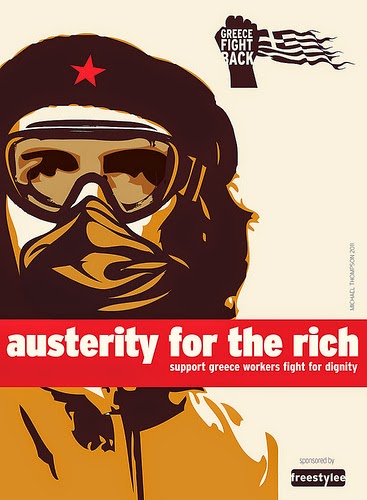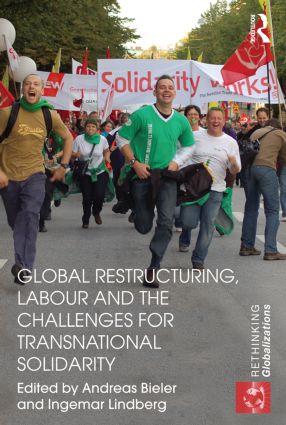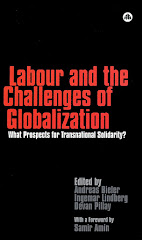Privatisation is a truly fantastic thing. Privatising public services
would result in four benign consequences, we are told: (1) the production of
services becomes more efficient and, therefore, cheaper; (2) the quality of the
services is improved; (3) the cost of services for the consumer is reduced; and
(4) companies providing these services can still make a profit. And this all as
a result of private services being subject to the competitive pressures of the
free market. Like a perpetuum mobile, a hypothetical machine which continues to function once activated,
privatization would have an inevitable and continuing positive impact once
implemented. In this post, I will critically evaluate these claims
against the background of my research on the Italian water movement against
privatisation (see Road
to Victory and La
lotta continua) and discuss why it is that this discourse continues to
enjoy such widespread acceptance, although it is empirically so obviously
wrong.
Privatising water in Italy – the empirical developments on the ground.
Water privatisation in Italy started in the late 1990s, early 2000s
especially in the region of Tuscany but also some other locations in central
Italy. Suez arrived in Arezzo in 1998 and in Firenze in 2001. In 1999, Veolia
bought a stake in the water company in Aprilia in the region of Lazio. Almost
immediately upon privatisation, prices for consumers increased drastically,
while investment in the maintenance of infrastructure went down. As one of my
interviewees told me, the price for water in Arezzo is now four times as high
as in Milano, where water services are still run by a publicly owned company. Less
investment in infrastructure, in turn, undermines the quality but also
efficiency of managing water provision in the future.
Privatisation in other areas and countries have also taught us that they
generally come hand in hand with downward pressure on wages and working
conditions of these companies’ employees. As a result of the privatisation of
some units of the National Health Service (NHS) in the UK, for example, pension
benefits have been cut and salaries eroded, resulting in a two-tier workforce
in the health system overall, with employees in the privatised part being
employed on inferior conditions to employees in the public part. Of course, it
is only a matter of time until the currently better conditions of the latter
will be assimilated to the conditions in the private sector as a result of
market competition.
In short, these fantastic, mysterious benefits of the perpetuum mobile of privatisation do not
materialise in reality. Why is this?
The objective of capitalism: profit maximisation.
In the capitalist social relations of production, it is not only
workers, which reproduce themselves through the market, but also employers,
capital. They are in constant competition with other capitalists for market
share. Should they be unsuccessful, they will go bankrupt. It is this constant
competitive pressure, which makes capitalism such a dynamic production system,
but also implies that it is prone to periodic crises as a result of
overaccumulation (David Harvey), a situation when no further profitable
investment opportunities can be found for the re-investment of profits from
past business dealings.
Importantly, the purpose of making profits is not to satisfy any
specific needs of capitalists. Despite of all the fancy cars, luxurious yachts
and expensive houses individual capitalists may buy themselves, they will never
be able to use up all the profits in their own private consumption. They are
simply too high and this not only for the 400 richest people in the world.
Instead of private consumption, profits constantly have to be re-invested in
order to generate yet further profits and, thus, stay ahead under the pressures
of capitalist competition. The type of production, in which profits are
invested, does not matter. Money is used to generate yet more money. This is
the current problem. We are in a situation of overaccumulation, in which the
enormous amounts of private wealth in the global economy find it increasingly
difficult to establish new opportunities for profitable investment. And this is
the moment, when the privatisation of public services comes in.
The provision of certain public services such as education and health,
water and energy, is the responsibility of the state in industrialised,
developed countries. The privatisation of the production of these services has
not implied to date that the state would give up on this responsibility. In
fact, states have set up regulatory agencies to oversee the private production
of services, as it occurred in the case of water in Italy, when a regulatory
agency was established to set the tariffs for the whole industry. And it is
this state responsibility, which makes the privatisation of services like water
such an attractive investment opportunity for capital. At times, when the
global economy is in crisis, investing in services provision, with profits
guaranteed by the state and state bailouts ensured should anything go wrong,
promises super profits, when any other investment opportunities have dried up.
It is profit maximisation, which drives privatisation, and not the efficiency
and quality of the services provided. The latter is simply the discourse with
which privatisation is justified.
As the case of water in Italy demonstrates, profits cannot only be
reaped through increasing the price for water or reducing the investment into
infrastructure maintenance. As I was told in interviews with activists from the
water movement, there were clear instances of cartel formation, when two
consortiums were both bidding for the contracts in two different areas and
withdrew shortly before the conclusion of the competitive tender in one area
each, ensuring that both of them secured one contract without the public authorities
having been able to engage in any meaningful negotiations about the contents of
the contract. Moreover, the contracts for infrastructure maintenance, which
privatised water providers do put out, often end up with subsidiaries of these
private providers.
Why do public authorities then carry out privatisations considering that
the assumed benefits are simply not materialising in reality?
The power of capital
 |
| Photo by freestyle |
Nevertheless, it is also the structural power of large TNCs and their
ability to threaten governments with the moving of production facilities or the
withdrawal of investment, should they not pass legislation facilitating TNCs’
operations. Especially in times of economic crisis, when the situation is
already bad, pressure of this type weighs heavily on the minds of
decision-makers.
The possibilities of resistance
And it may be the discourse around the commons, collectively
owned and administered by the people, which may provide a basis for challenging
the discourse of the perpetuum mobile of
privatisation.
Prof. Andreas Bieler
Professor of Political Economy
University of Nottingham/UK
Personal website: http://andreasbieler.net
7 May 2014
















No comments:
Post a Comment
Comments welcome!